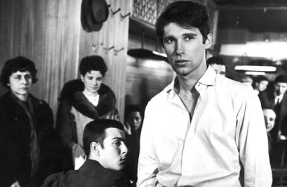
n the modern cinema, the imageless screen assumed a new, decisive importance. No longer there as mere punctuation, or used to simply mark a change of scene, the interstice took on an independent value of its own. To essay its new status, one might contrast the strictly functional stitch points of Alfred Hitchcock’s (1948) with the transitions of Stan Brakhage’s (1955), where the interstice between images—the pure black or white screen—serves a reflexive, properly structural value. In the latter, we are no longer dealing with linkages of associated images, but relinkages of independent images across a yawning void. Robert Bresson’s , with its emphasis on “what happens in the junctures,” on the joins and ellipses through which poetry “penetrates unaided,” exemplifies this new understanding, and its principles have been carried forward (2021), where, for a few seconds, we are asked to close our eyes and assimilate an imageless void into the film itself.






